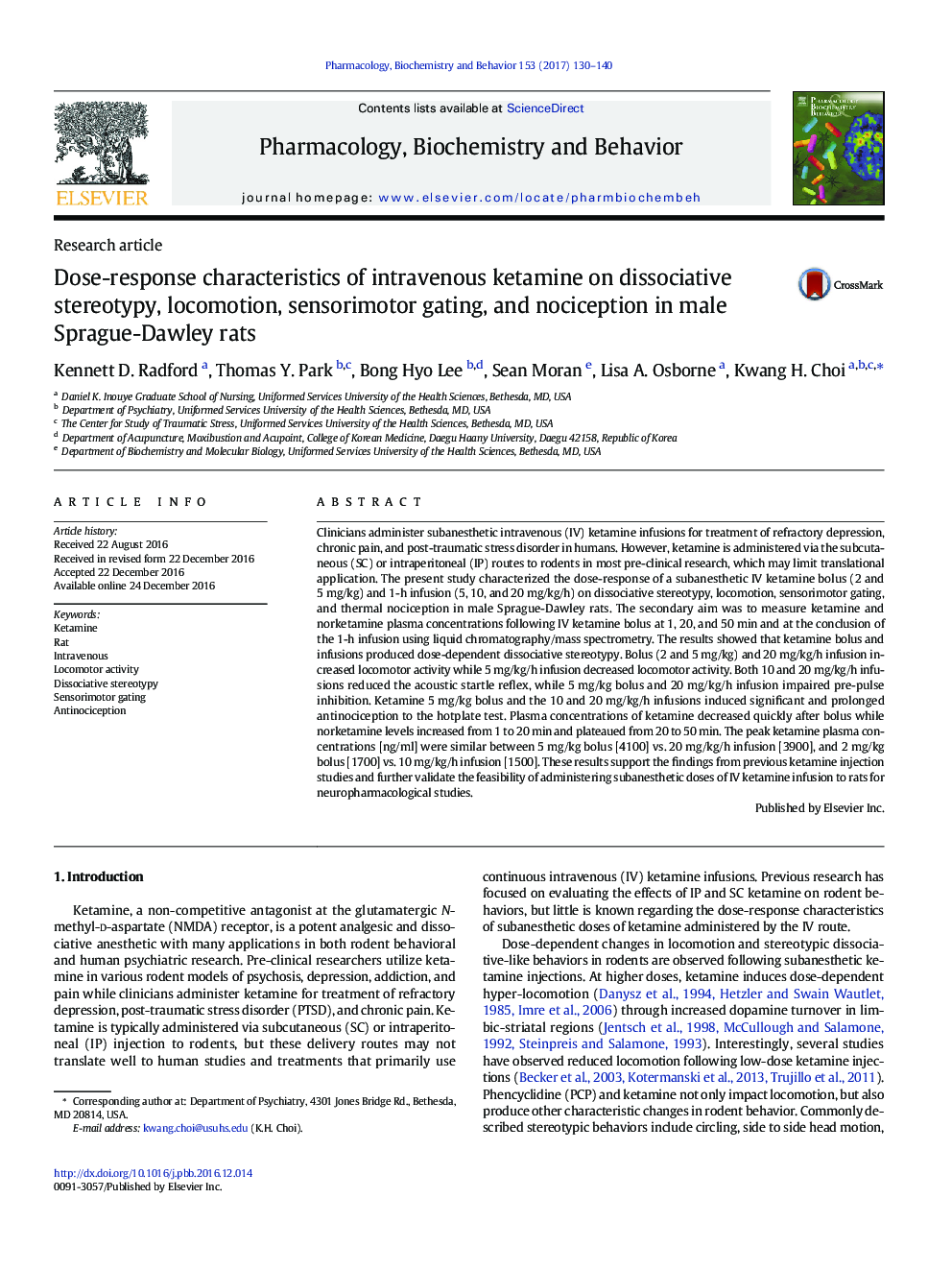| کد مقاله | کد نشریه | سال انتشار | مقاله انگلیسی | نسخه تمام متن |
|---|---|---|---|---|
| 5515225 | 1541834 | 2017 | 11 صفحه PDF | دانلود رایگان |

• Intravenous (IV) ketamine is a valid administration route for rat behavior studies.
• Ketamine IV bolus induced hyper-locomotion, impaired PPI, and antinociception.
• Ketamine IV infusion induced hypo & hyper-locomotion and extended antinociception.
• A high-dose ketamine infusion reduced acoustic startle and impaired PPI.
• Plasma ketamine concentrations rapidly declined after bolus and infusion administration.
Clinicians administer subanesthetic intravenous (IV) ketamine infusions for treatment of refractory depression, chronic pain, and post-traumatic stress disorder in humans. However, ketamine is administered via the subcutaneous (SC) or intraperitoneal (IP) routes to rodents in most pre-clinical research, which may limit translational application. The present study characterized the dose-response of a subanesthetic IV ketamine bolus (2 and 5 mg/kg) and 1-h infusion (5, 10, and 20 mg/kg/h) on dissociative stereotypy, locomotion, sensorimotor gating, and thermal nociception in male Sprague-Dawley rats. The secondary aim was to measure ketamine and norketamine plasma concentrations following IV ketamine bolus at 1, 20, and 50 min and at the conclusion of the 1-h infusion using liquid chromatography/mass spectrometry. The results showed that ketamine bolus and infusions produced dose-dependent dissociative stereotypy. Bolus (2 and 5 mg/kg) and 20 mg/kg/h infusion increased locomotor activity while 5 mg/kg/h infusion decreased locomotor activity. Both 10 and 20 mg/kg/h infusions reduced the acoustic startle reflex, while 5 mg/kg bolus and 20 mg/kg/h infusion impaired pre-pulse inhibition. Ketamine 5 mg/kg bolus and the 10 and 20 mg/kg/h infusions induced significant and prolonged antinociception to the hotplate test. Plasma concentrations of ketamine decreased quickly after bolus while norketamine levels increased from 1 to 20 min and plateaued from 20 to 50 min. The peak ketamine plasma concentrations [ng/ml] were similar between 5 mg/kg bolus [4100] vs. 20 mg/kg/h infusion [3900], and 2 mg/kg bolus [1700] vs. 10 mg/kg/h infusion [1500]. These results support the findings from previous ketamine injection studies and further validate the feasibility of administering subanesthetic doses of IV ketamine infusion to rats for neuropharmacological studies.
Journal: Pharmacology Biochemistry and Behavior - Volume 153, February 2017, Pages 130–140